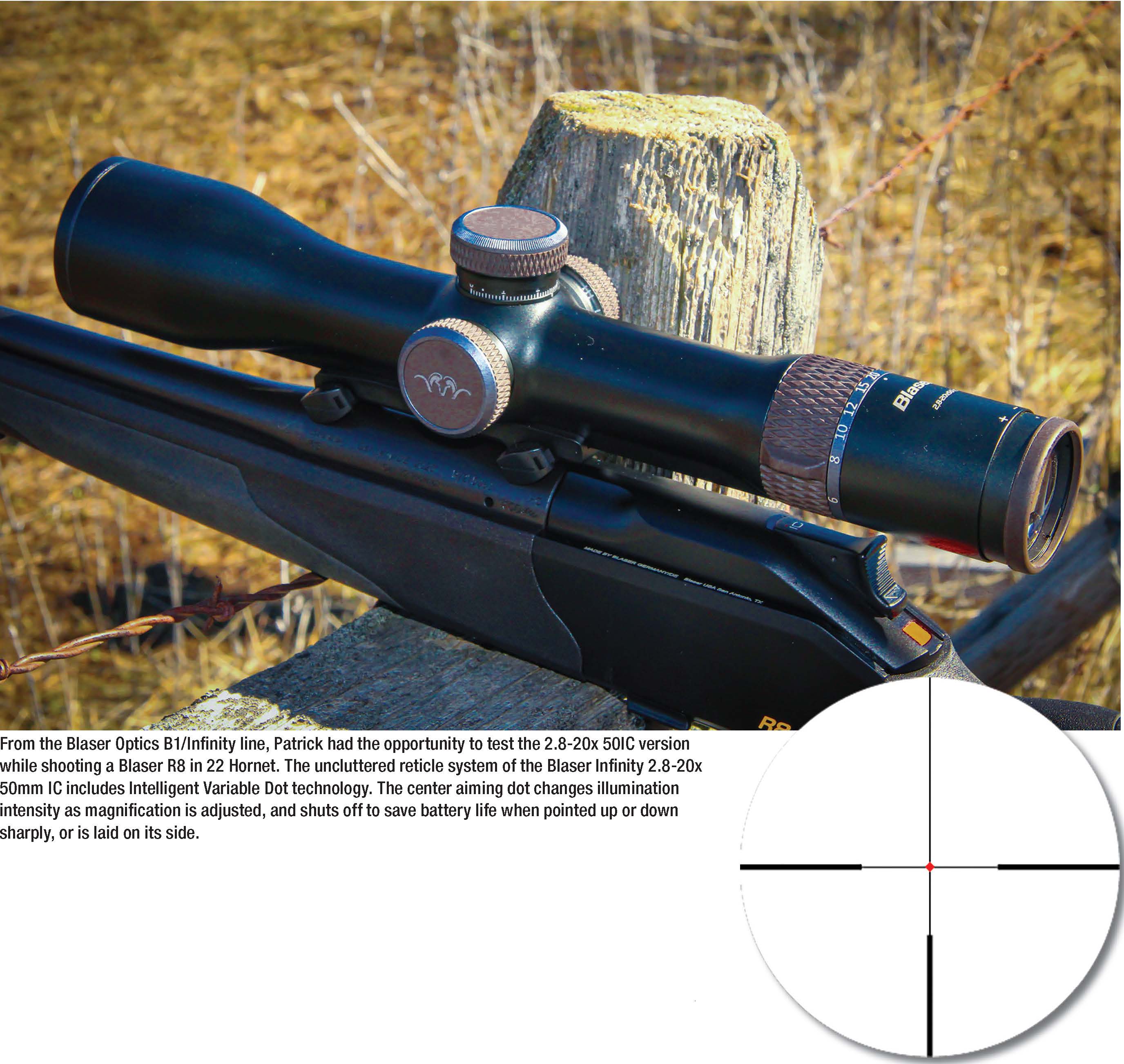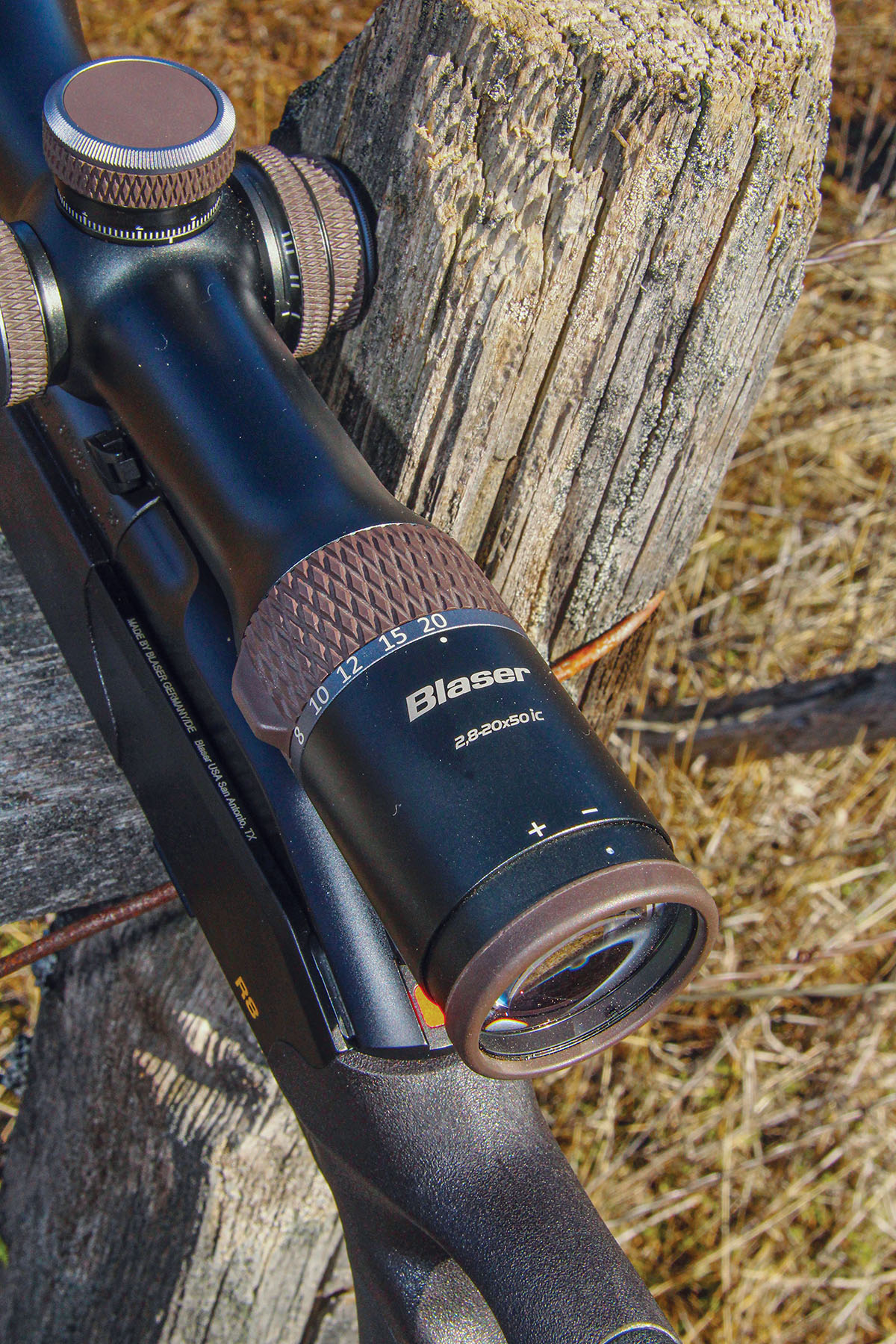
The magnification ring and ocular diopter ring of the Blaser Infinity 2.8-20x 50IC included the same brown rubber covers as other control surfaces. All controls turned as if on bearings.
There’s no beating German- or Austrian-made optical glass or mechanical systems. All of us are familiar
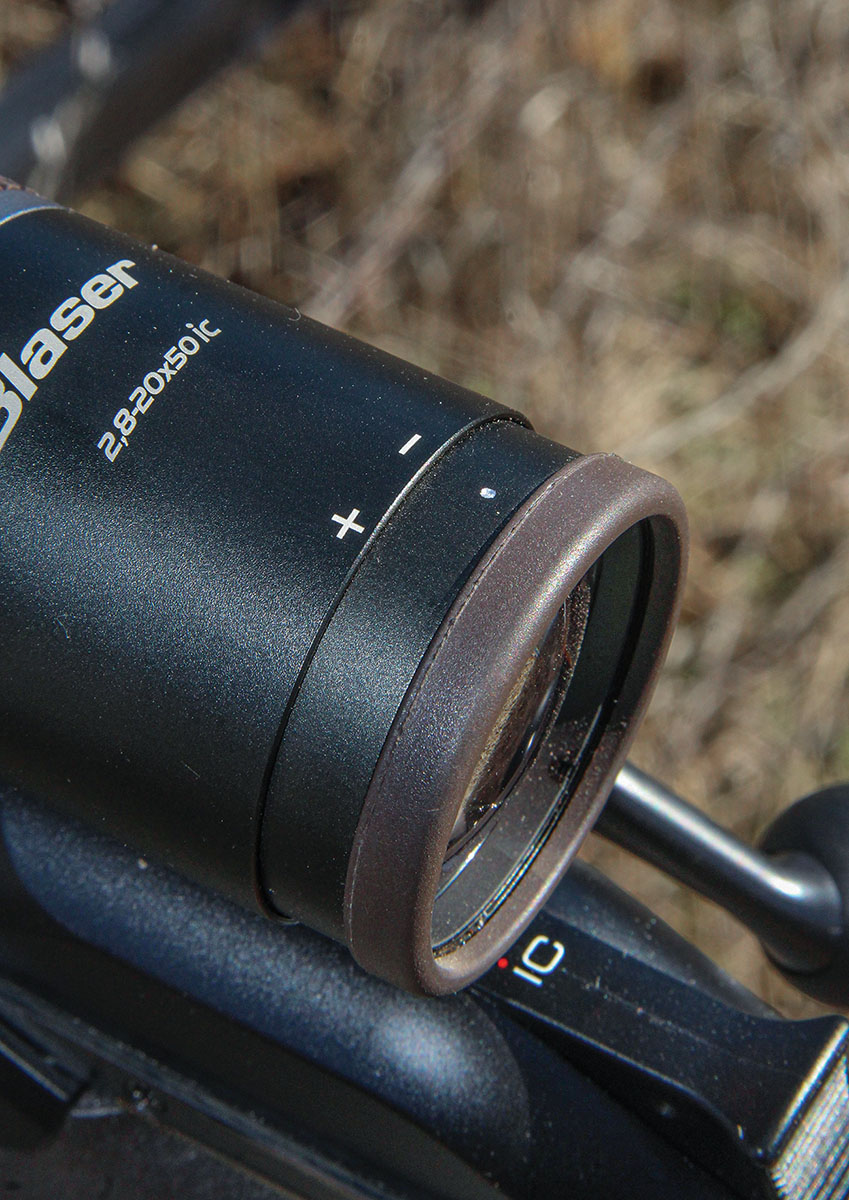
The ocular ring includes a rubber covering that ensures a good grip while adjusting the diopter to bring the reticle into tack-sharp focus. It also helps protect from scope cuts while shooting hard-recoiling magnum rifles.
with names like Zeiss, Leica, Swarovski, and more recently, Zero Compromise Optic. The Teutonic influence on optical systems is world-renowned. Blaser Optics was added to that list in 2018, an offshoot of the Blaser Group, which includes Blaser, Mauser, J.P. Sauer, John Rigby & Company firearms, Minox and Liemke optics.
Blaser Optics riflescopes came as a result of the company’s successful line of binoculars. The scope lineup appeared in 2018 – designed, developed and manufactured entirely in Germany by hunters for hunters. Blazer B1 Infinity scopes are offered in three models, including 1-7x 28 IC, 2.8-20x 50 IC and 2-20x 58 IC configurations. These are first focal plane (FFP) optics with illuminated reticles. Color-corrective coating provides clear, high-contrast viewing and 90 percent light transmission.
I had the opportunity to thoroughly test an Infinity 2.8-20x 50mm IC as part of a Blaser R8 rifle package chambered in 22 Hornet for a Spring 2025 Varmint Rifles & Cartridges project. The R8 arrived in a handsome leather-trimmer locking hard case with the Blaser Optics Infinity 2.8-20x 50 IC riflescope. The scope proved a welcome blend of user-friendly controls, exceptional optical clarity and low-light performance.
The Blaser Infinity 2.8-20x 50 IC was designed with serious long-range hunting in mind; including snipping tiny burrowing rodents. My example included a European quick-detach Saddle Mount system compatible with Blaser R8 rifles, though a rail-less version is also available for American scope-ring systems.
The Infinity 2.8-20x 50 IC carries the feel of a solid optical system, evidenced by its 27.16-ounce mass. Blaser says robust construction is the hallmark of the Infinity line, a riflescope built to withstand the hard knocks of serious hunting and the rigors of extreme weather. This includes hard-coat anodizing on the
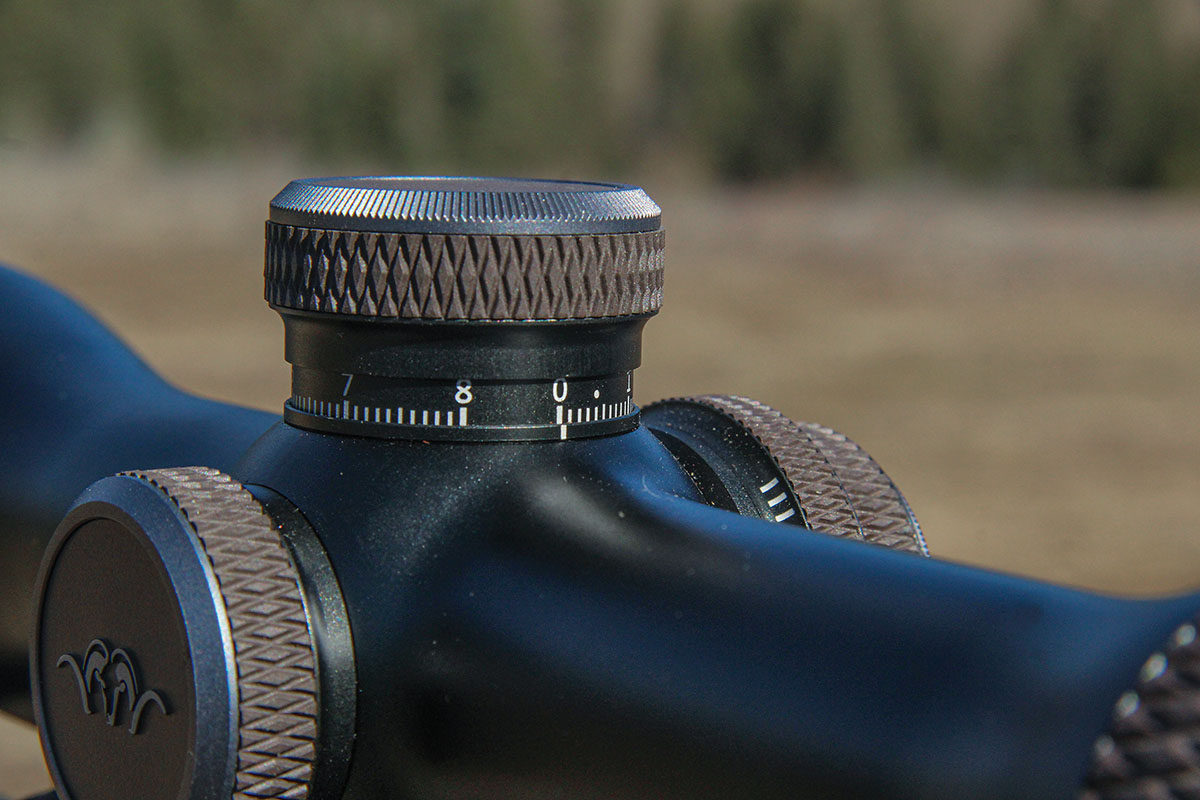
The Infinity 2.8-20x 50IC by Blaser Optics includes an exposed elevation turret with a pop-up/down locking function.Hash marks in 1cm increments and numeric positions from 0 to 8 are provided.
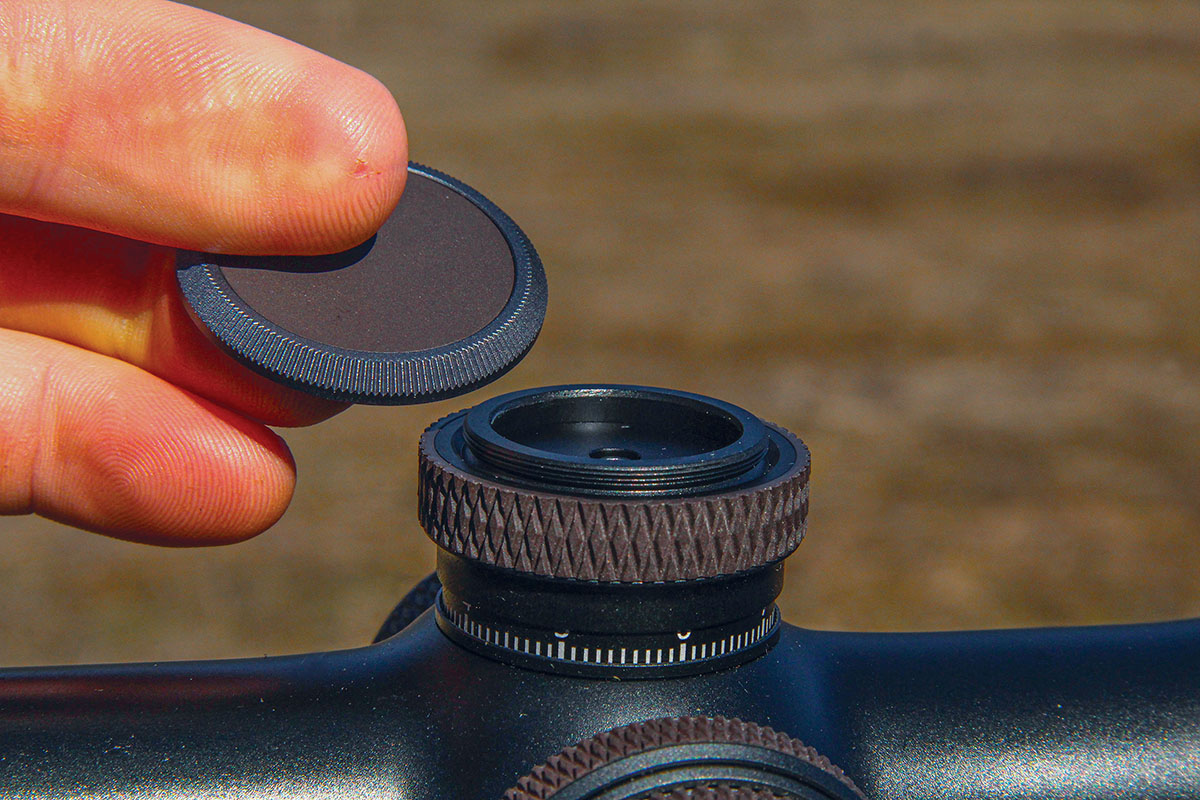
A top edge-knurled cap can be removed with your fingers to gain access to the return-to-zero function following sight-in.
34mm tube and a nanotechnology finish that adds dust and water resistance. From its 34mm main tube to all control wheels, the Infinity scope includes 100 percent metal construction. Yet, despite its 20-power top-end magnification and light-gathering 50mm objective lens, the scope appears sleek and relatively compact at 13.5 inches in length.
It is also quite aesthetically pleasing and required only one look to reveal the Blaser’s top-tier optical qualities. It provides remarkably sharp images, even at its highest magnification and in the dim edges of day. This is the result of Blaser’s best-quality glass, which delivers minimal distortion, color fringing and precise German multi-layer coatings, which reduce reflection across the visible light spectrum and enhances light transmission.
The 20x top-end magnification is well suited to addressing long-range targets, whether that be a mule deer at 400 yards or a tiny Belding’s ground squirrel
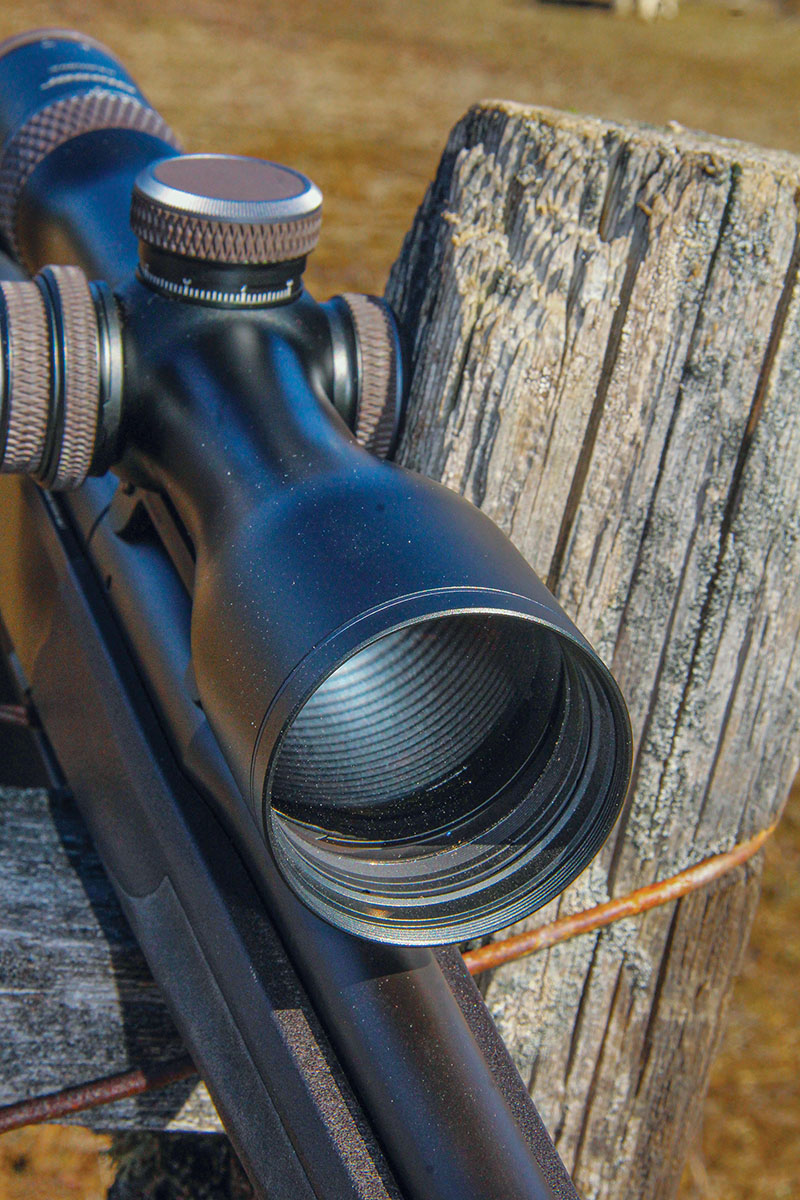
Blaser Optics now joins other legendary German optics brands to bring hunters high-quality glass and industry-best coatings for clear views even in low-light shooting conditions.
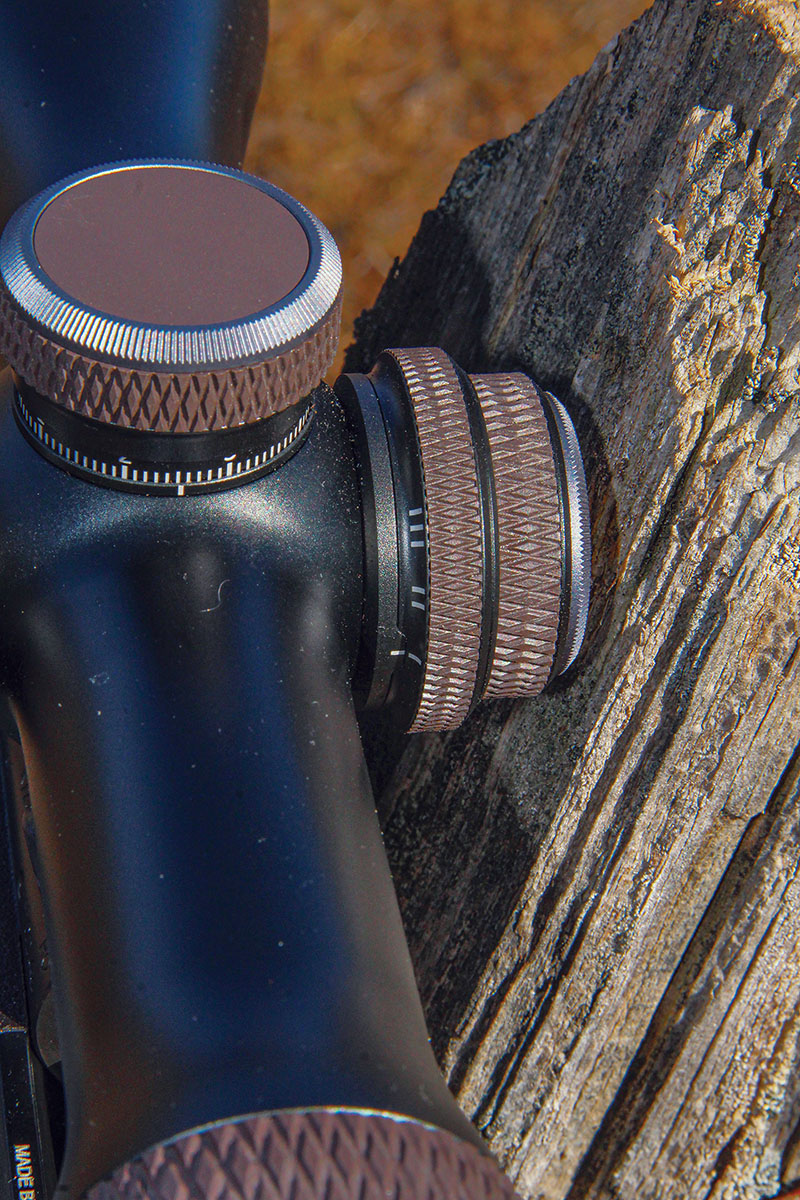
The parallax settings on the Blaser Infinity are a little different. An I mark handles most average yardages, with II and III marks used to introduce focus during longer shots. The spring-loaded control wheel pulls out to unlock and pops back in after adjustments are made.
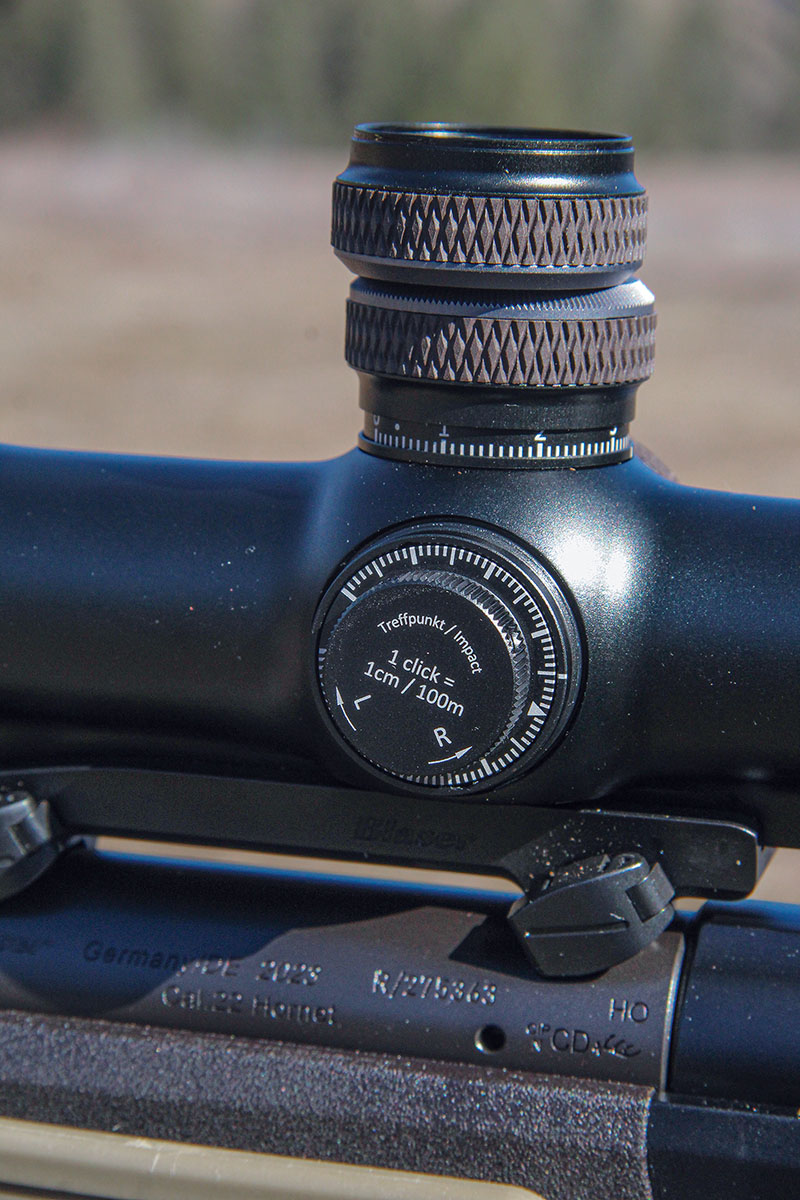
Elevation and windage corrections are made in metric 1 centimeter at 100 meters increments, with the windage dial covered and the elevation knob exposed.
at 200 yards. That kind of magnification, combined with the exceptional optical system, provides vivid detail and precision that promotes confident shot placement on camouflaged game or those emerging in low light. Edge-to-edge clarity remained perfect through the entire magnification range. The optic also provides a generous 3.5 inches of eye relief.
The reticle proved uncluttered yet precise, featuring Intelligent Variable Dot technology with a self-adjusting, illuminated, floating red center dot that automatically adapts to the chosen magnification setting. The illuminated center dot requires battery power but automatically shuts off to conserve power when the rifle is pointed sharply upward or downward, or when it is laid on its side. Illumination is instantly restored when the rifle is brought into the shooting position. The Infinity holds precision adjustment mechanisms, but is reversed from typical American layouts. The windage turret is found on the left side of the scope, and the parallax control is on the right. All control surfaces, including the top elevation turret, windage-threaded cover cap, parallax wheel and magnification ring, are included with knurled rubber coverings. The ocular diopter focus ring is covered in smooth rubber of the same brownish hue. Turrets are markedly low profile.
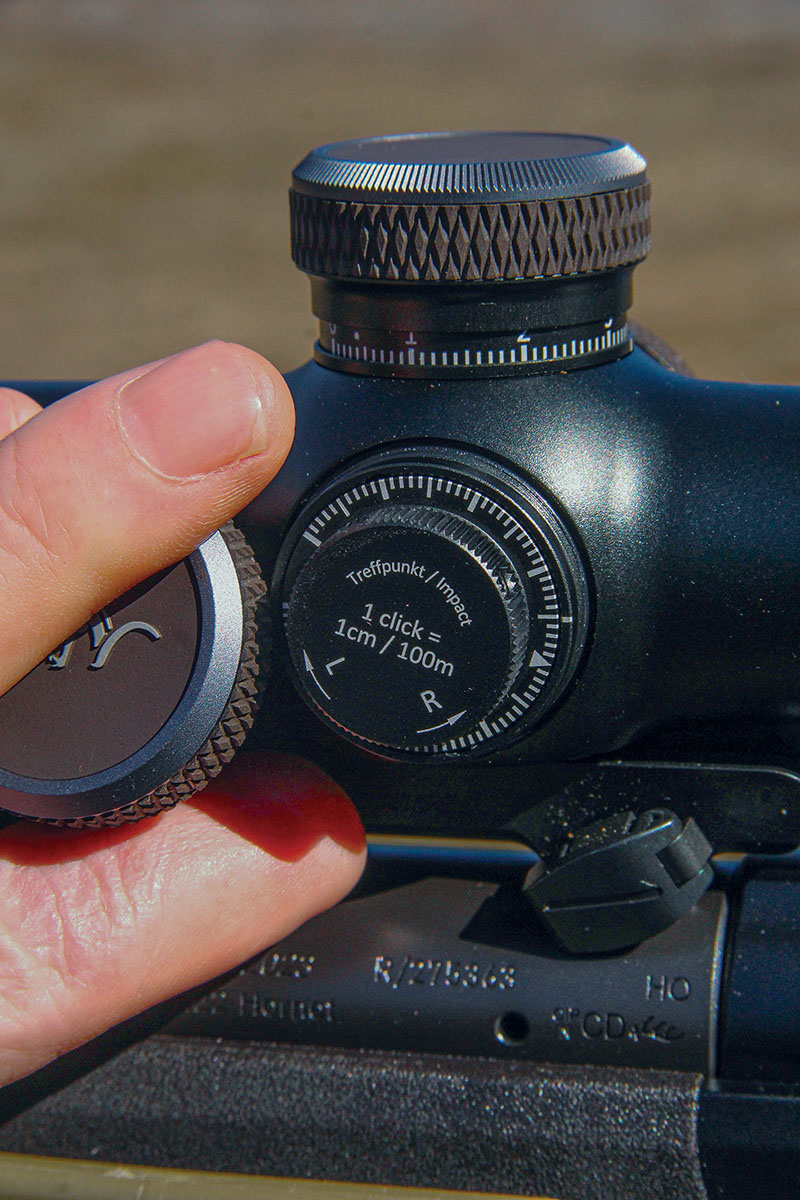
Removing the windage turret cover cap reveals a raised knob and hash-mark base that is moved against a static hash mark. A wedge serves as 0, the system includes two set screws that allow returning the wedge to zero.
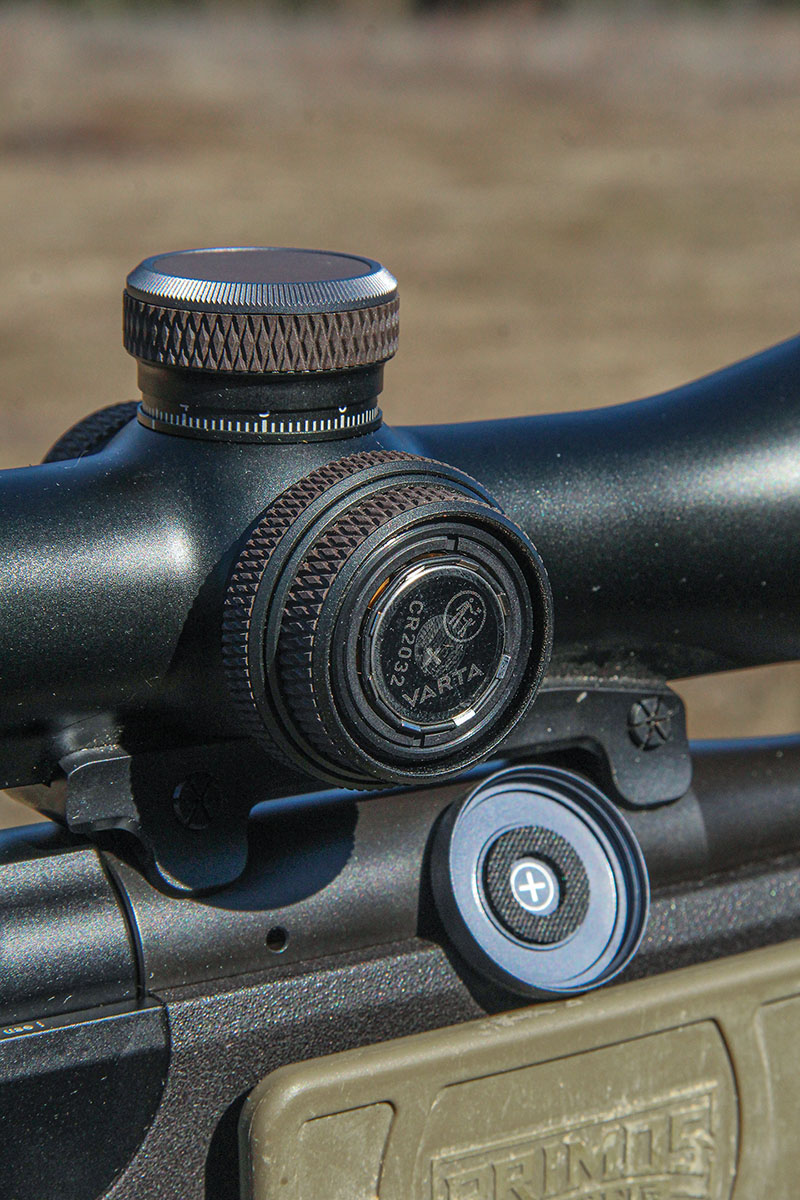
The Blaser Infinity line includes Intelligent Variable Dot technology, which includes battery power, in this case a CR2032 lithium coin cell. The battery is accessed through a right-side threaded cover cap.
Once I became accustomed to the left-right control orientation, I found adjustments to be intuitive and easily manipulated. The smoothness of all focus adjustments, Quick Distance Control (QDC) parallax and ocular, was noteworthy, proving not too stiff nor too loose and turning as if on bearings. QDC allows hunters to switch between their zeroed setting to longer distances, while locking each against unintentional movement through a pop-in/out feature. Parallax between 50 meters (54.7 yards) and infinity are possible. Testing the Blaser R8 22 Hornet, and by association the Blaser Optic, occurred in notably cold and wet conditions. Due to editorial deadlines, I did a lot of shooting with this optic in freezing temperatures and falling snow. The Infinity continued to operate flawlessly, the outer lenses even seeming to resist fog as I was on and off the rifle. The latter is likely due to Blaser’s Smart Lenses Coating (SLP) technology, which protects the objective lens against dirt and moisture. Some of those shooting sessions were with downright gloomy, woolly skies and sifting snow blotting out the sun. This truly highlighted the Infinity’s excellent low-light excellence. Targets remained bright and detailed, with 100-yard bullet strikes easily identified while assembling groups.
The turrets move in precise 1cm/100m increments. A milled-aluminum cap covers the windage control and the interior knob is a raised knob with dual set screws to allow zeroing it after sight-in (return to a wedge pointer, as no numeric place marks were included, only white hash marks). Elevation corrections were made with an exposed turret, numbered 0 through 8 with 1cm hashmarks between the numbered positions. The top cap popped up and down to lock adjustments and included an edge-knurled topper cap that could be removed to return the turret to 0 after sight-in.
Like other German wares, this optic doesn’t come cheap, including a retail price of around $4,000. German optical and mechanical quality is certainly there for those willing to pay for the best quality possible. The Infinity line also comes with a 10-year warranty.
